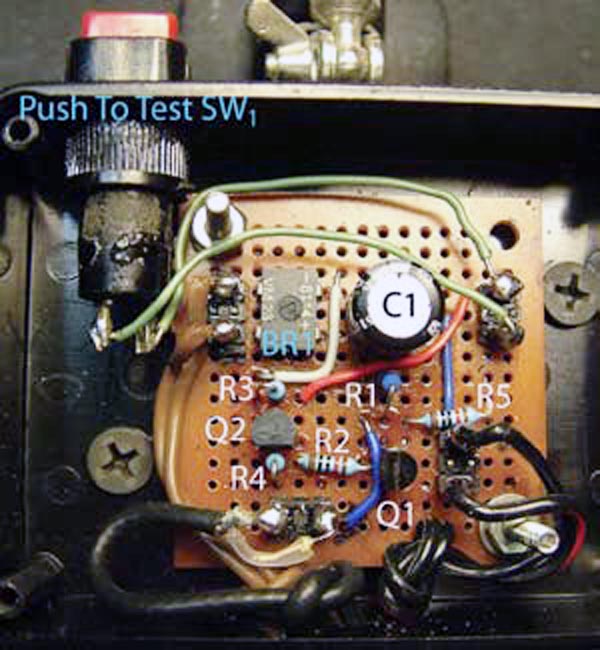Jeff Tregre
EDN
Shortly after installation, the simple water-leak-detector circuit in this Design Idea saved the day and hundreds of dollars. The average life expectancy of a hot-water heater is about 10 years. It’s not a question of whether it will leak; it is simply a matter of when it will leak. The builders of new homes in the Midsouth region of the United States have been installing hot-water heaters in attics. This approach saves valuable space; however, if you only infrequently visit the attic, you may not discover that your hot-water heater is leaking until it is too late. By that time, it may cost you hundreds of dollars to repair the water damage to ceilings and walls.
 |
|
| Figure 1. | A transformer and a bridge provide power for the speaker. |
The circuit in Figure 1 detects hot-water-heater leakage, and you can also use it for detecting leaks in dishwashers, garbage disposals, ice makers, swimming pools, hot tubs, and waterbeds. Figure 2 shows the completed circuit.
 |
|
| Figure 2. | The circuit includes a push-to-test button. |
Most doorbell transformers produce 16 to 20 V ac. To drive the buzzer, you must convert the ac voltage to dc: Multiply the ac voltage by 1.414 to yield the dc-rms voltage. Connect the wires to the secondary side of the transformer to a bridge rectifier and then into a filtering electrolytic capacitor. Your power supply should now be providing about 26 V dc. The 5.1-kΩ resistor, R1, limits the current to the buzzer. When the system detects water or when you press the push-to-test switch, you have about 6 V dc to operate the circuit and sound the piezoelectric speaker. Mount the speaker so that you’ll hear it when it sounds.
 |
|
| Figure 3. | Use a sponge and copper wire to form a water probe. |
Transistors Q1 and Q2 can be any general-purpose NPN and PNP types, respectively. The water probes use copper wires about 1 in. apart from each other. You then pierce two holes, about 1 in. apart, into a sponge from a soldering station. Insert bare copper wire into these holes (Figure 3). Take some of the remaining wire but leave the insulation on it and wrap it around the sponge so that the bare copper wire does not come out (Figure 4).
 |
|
| Figure 4. | The completed probe with bare wire inside senses water through a change in resistance. |
You can now place this sponge in the metal overflow tray underneath the hot-water heater. When the hot water leaks, the sponge absorbs it. The resistance between the two bare copper wires then drops to about 1 MΩ or less, which forward-biases the two transistors and enables the piezoelectric speaker. The cost for this circuit shouldn’t exceed $25. If you have more than one hot-water heater in the same area, you can make another water probe and tie the two probes together in parallel.